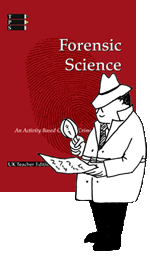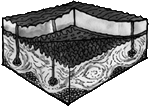Forensic Science
Newly aligned to the BTEC Applied Science Level 2
Available in printed or digital format
Science educators have long recognised the perfect marriage of Science concepts and skills with the “real-world application” of Science knowledge, which can be found in Forensic Science. Students are now intensely interested in the field of using Science to solve crimes, as portrayed in crime scene investigation shows and find that they can carry out simulations of these investigations within their lab experiments.
The programme is being used successfully across the country. Andrew Bradshaw, Head of Science at Richard Rose Central Academy said;
“Encapsulating all aspects of the course in a fun and easily accessible way, this is the perfect accompaniment to help students studying Forensic Science embed the theoretical and practical facets of their learning whilst producing work for their final portfolio."
TPS Publishing’s Forensic Science Programme has been written in an engaging and accessible way to aid students studying for the BTEC in Applied Science.
Forensic Science is made up of:
• Eleven units, from crime scene processing and fingerprint analysis to drug and DNA analysis
• Each unit also has an aligning "do now", giving students the opportunity to engage in scientific enquiry and use their knowledge in crime situations
• The programme was written by a forensic chemist and based on real crime scenes; her husband is an FBI agent!
• We also have a student workbook, which means all the evidence needed for assessment is kept tidily in one place
The eleven units are:
An Introduction and the History of Forensic Science
An introduction to the world of forensic science, including a history of some of the most significant developments in the field.
Crime Scene Processing
Learn how to process a crime scene. Includes investigations to teach the correct steps, including packaging evidence, creating rough and final sketches and developing an understanding of the chain of custody of evidence.
Finger Print Analysis
Developing knowledge of the types and patterns of fingerprints. Learn how to classify and individualise prints, develop an understanding for how the "Automated Fingerprint Identification System" operates and how to actively process, preserve and visualise latent fingerprints.
Firearms Analysis
Develop knowledge of the concept of rifling, become familiar with the components of ammunition, learn how and where marking are created on ammunition when a weapon is fired and practice proper initialling techniques during the collection of firearms evidence.
Drug Analysis
Drug analysis involves determining the identity and purity of a piece of evidence. This module covers microscopic analysis, colour and microcrystalline tests and quantitative analysis through extraction on powdered samples.
Hair and Fibre Pattern Analysis
Become familiar with the unique characteristics of hairs and fibres through microscopic analysis, learn how to differentiate between animal and human hair, natural and artificial fibres, and develop an understanding of evidentiary value.
Bloodstain Pattern Analysis
Explores the direction of travel, area of convergence and angle of impact of the blood drops that comprise a bloodstain pattern, become familiar with the different types of patterns, learn how to calculate the angle of impact for a blood drop and create a small-scale 3-dimensional representation of a bloodstain pattern.
Document Analysis
Document analysis involves the examination of aspects of documents to determine their authenticity. Presented in this unit are investigations into handwriting development, analysis of handwriting characteristics, plus experiments with chromatography on ink samples.
Impression Evidence
Imprints made by shoes and tyres in soft materials are two examples of impression evidence that may be found at a crime scene. This unit explores the difference between casts and moulds, developing experience in casting impressions and analysing small-scale tyre track impressions.
DNA Analysis
Forensic DNA analysis can reliably match DNA evidence found at a crime scene to a possible suspect. This unit discusses the steps taken to prepare samples of DNA for analysis and the process of gel electrophoresis, a technique commonly used to analyse DNA.
Presenting Evidence/ Documenting Your Work
Collecting, processing, and analysing evidence is a critical part of investigating a crime. However, every bit as important is the way in which the forensic scientist presents his or her findings. This unit explores the role of the forensic scientist and how evidence can be presented properly.



